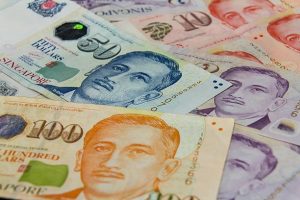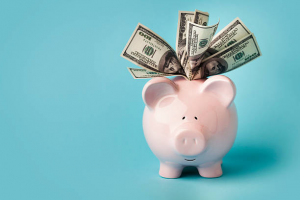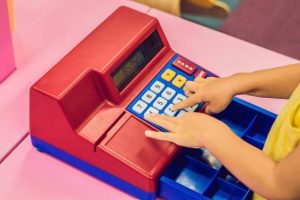
[iStock]
Studies show that the best time to start teaching our children the concept of money is during their preschool years (from 3 to 6 years old).
So we should start teaching our preschoolers about money as soon as we can. This gets them comfortable with handling and counting money. How do you do that though?
Start Saving Up!

[iStock]
When our preschoolers are in their preschool age, we want to help them develop money-saving habits. This will be ingrained into their money belief systems and is most likely a habit that will stick with them until adulthood.
So how do you encourage them to start saving up? Here are some tips:
1. Use a clear jar instead of a money box
When you use a clear jar, it shows your preschooler their progress in saving money, and because they can see that there is more money, it might encourage them to save more. It also reassures them that the money is still there, and they will feel more secure using a savings ‘bank’.
2. Reward them
When your preschooler does something good or helps out around the house, you can give them some money to put into their savings. For example, when they help you to throw rubbish away, you can give them 50 cents to add to their savings.
As your preschooler saves up, it is important to track their progress because it gives them a sense of achievement.
It is also good for them to determine how much they want to save before a deadline. For example, it could be $50 by the end of the year. This gives them a goal to work towards and also teaches them how to set realistic and achievable goals.
Teach Them the Difference Between Wants and Needs

[iStock]
During this time, when your preschooler is young, it is the best time to encourage good habits so that they carry these good habits with them as they grow up. One of such good habits is differentiating between wants and needs.
Your preschooler needs to identify between a ‘want’ or ‘need’, some purchases are necessary while others are a luxury to have. This develops good money spending habits and they learn to be more conscious of their spending.
To teach them this, bring them shopping with you and discuss with them whether something is a ‘need’ or ‘want. For example, clothes are a need while toys are a want.
Shopping Simulations

[iStock]
One important part of using money is paying for something. How much something costs, needing to calculate the budget and ensuring that you get the right amount of change back.
So one way you can let your preschooler practise this is by using shopping simulations. You can start off by drawing out coins and notes on paper cut-outs and giving them to your preschooler, make sure to write down the amount of money on these cut-outs.
Then you can either use toys or objects around the house (label them with a price tag!) and let your preschooler ‘buy’ them.
They will choose an item they want, come to you, pay for it and make sure they get the right amount of change back. This pretend play is an excellent way for your preschooler to learn how to use money practically, and it teaches them how to count money.
Bring Them Shopping

[iStock]
Once your preschooler gets the hang of using money in shopping simulations (refer to the previous point), it’s time for them to get the real experience. So bring them out with you on your shopping trips and let them work with real money.
During these shopping trips, you can just buy your regular items, but make sure to show your preschooler the price comparisons. Once you have your items ready, you can let them pay the cashier, with your supervision, of course.
This way, they get to practise their mathematics and money counting skills. It is also a hands-on learning experience for them to get them used to using money and conversing and socialising with others (mainly the cashiers).
Conclusion

[Money Crashers]
During their preschool years, it is important to teach our children essential life skills that they need to use in the future, like working with money. This is especially so since they will also need to use money in the near future.
